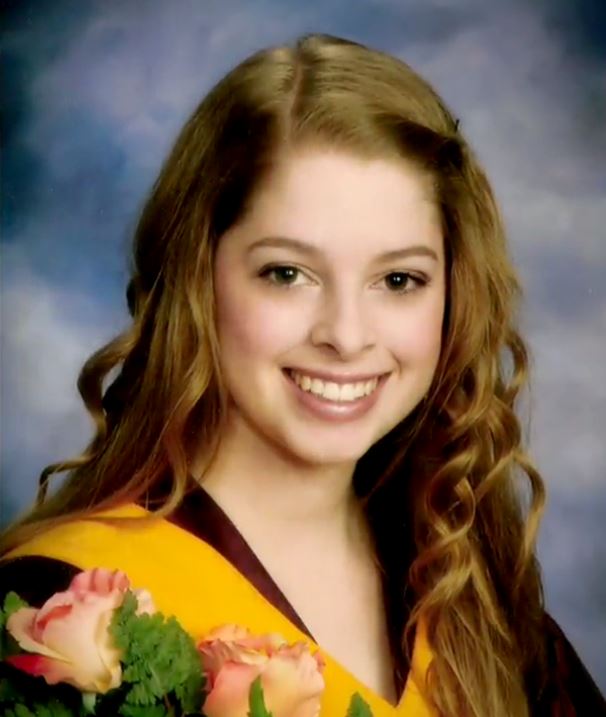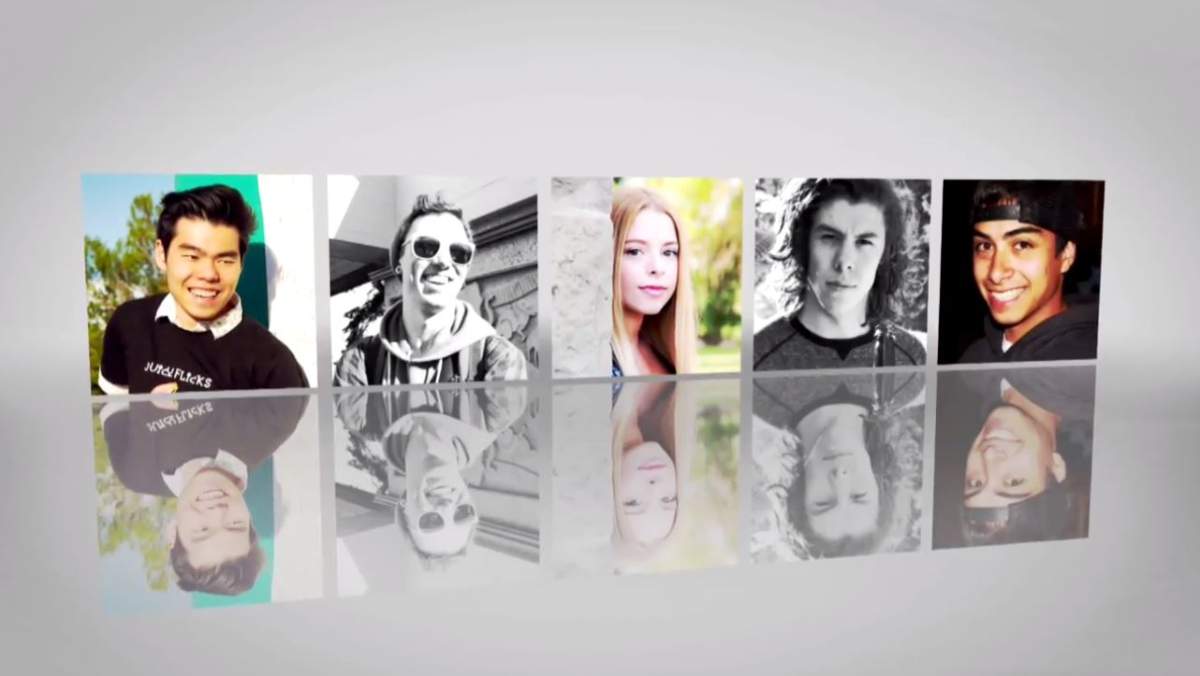
By
Nancy Hixt
Global News
Published May 29, 2020
9 min read

It was a day that left a scar on the soul of a city — the biggest mass killing in Calgary’s history.
On April 14, 2014, a group of friends threw a party to mark the end of classes at the University of Calgary at a small, grey-and-blue split-level house on a quiet block on Butler Crescent in the nearby neighbourhood of Brentwood.
It was a relatively small gathering, with many of those invited having gone to junior high or high school together. The rest knew each other from university.
It was an amazing group of young people that included Kaiti Perras, an accomplished dancer.

Lawrence Hong was an aspiring urban planner.

Josh Hunter and Zackariah Rathwell were two talented musicians.
Jordan Segura was a young man well on his way to becoming a humanitarian.
The mood was laid-back and relaxed. Nothing crazy or out of hand.
A few people hung around the fire pit in the backyard, others inside the house.
One guy, Matthew, stood out. He was invited by Brendan, one of the roommates at the Brentwood house. They were childhood friends.
He arrived late to the party, and his conversations seemed ominous; he went on and on about conspiracy theories.
Most of the partygoers didn’t think much of it.
But his behaviour got more and more strange.
At one point, he put on blue surgical gloves and even kept them on when he washed his hands.
He also carried garlic in his pocket.
He started talking about the blood moon, the apocalypse and vampires.
At around 1 a.m. on April 15, a group of friends went to a nearby McDonald’s to pick up food.
Lawrence was asleep on a love seat in the living room. Josh, Kaiti and Jordan were all sitting together on a couch across the room.
Zack was in the kitchen.
What happened next happened quickly — and unexpectedly.
Matthew suddenly took a large chef’s knife from a block in the kitchen.
He stabbed Zack seven times, then went into the living room.
There was no warning, no fight, no altercation.
Josh was stabbed six times. Matthew stabbed Jordan once.
Katie tried to escape and ran out of the living room, but he quickly caught up to her in the dining room and stabbed her four times.
Lawrence was still asleep when he was stabbed four times.
Despite suffering life-threatening injuries, Josh got up and ran out the front door of the house.
Matthew followed him.
The group who had gone to pick up fast food returned, heard Katie’s screams from inside the house and witnessed Matthew chasing Josh down the street with the knife in hand.
Brendan, the roommate who invited Matthew, ran after him.
Josh was still in a fight for his life and ran back towards the house, where he collapsed on the front lawn.
Brendan caught up to Matthew down the street.
Matthew handed over the blood-soaked knife, told Brendan “it was the night of the long knives” and then took off.
Brendan chased after him again. Once he caught up to him, Matthew wiped his bloody hands on Brendan’s hands — and told him “they were blood brothers.”
He warned his friend not to get in his way or he would be next.
Brendan let Matthew go.
Meanwhile, back at the house, one of the other roommates called 911.
Police arrived on the scene within five minutes.
Zack, Jordan and Lawrence were already dead.
Josh and Kaiti were rushed to hospital but later died from their injuries.
Almost immediately after the 911 calls were made, Matthew was spotted by police “running frantically” away from the crime scene.
Officers deployed the canine unit and said he appeared to have no fear of the police service dog. He showed no signs of pain and continued to fight back as they put him under arrest.
Inside his pocket, they found a latex glove, and he had a clove of garlic in his sock.
He told police it was “to keep the vampires away” and said he wanted to speak to a lawyer.
WATCH: Matthew de Grood told psychiatrist a voice said ‘kill them before they get you’
He was put into an ambulance and told paramedics: “I was just trying to kill them… before they killed me.”
To add to the complexity of the case, investigators quickly learned the suspect was the son of one of their own.
Matthew de Grood was the 22-year-old son of a veteran high-ranking officer with the Calgary Police Service and would soon be charged with five counts of first-degree murder.
But what led to such a horrific and violent attack?
WATCH: Brentwood families unite in grief
De Grood’s state of mind at the time of the stabbings would become the focal point of the case.
Doctors who assessed him said he was clearly experiencing a psychotic episode at the time. Evidence showed he believed he was “the son of God and Hitler reincarnated” and that the victims were Illuminati, werewolves and medusas.
He was eventually diagnosed with schizophrenia.
During the trial, it was revealed de Grood heard a male voice who he thought was Satan telling him to kill the five young people before they killed him.
But determining what was real or what could have been fake also became a major part of the police investigation in this case.
After hours of interviews and psychological testing, experts supported a finding of not criminally responsible (NCR).
On May 25, 2016, the justice presiding over this case agreed with those experts and found de Grood NCR.
WATCH: Matthew de Grood found not criminally responsible in Brentwood murders
The Queen’s Bench justice emphasized the law around an NCR ruling, which ensures people who have mental disorders are treated, not punished.
That court ruling officially ended de Grood’s dealings with the Canadian criminal justice system, and his case was moved into the health-care system.
He was sent to a secure psychiatric facility.
But for how long?
Would there come a day when he would once again be free?
WATCH: Families of Brentwood victims make joint statement at conclusion of trial
That’s the question to which the families of the five victims wanted an answer.
The Alberta Review Board (ARB) looks at de Grood’s case annually and decides if there is still a significant threat to public safety.
It’s not up to de Grood to prove he isn’t a risk. It’s up to the board to find evidence that he is.
Each year, the board has three options: continue his treatment in a secure facility, grant him a conditional discharge or grant him an absolute discharge.
The law states the board has to impose the least onerous restrictions while protecting the public.
According to a 1999 ruling by the Supreme Court of Canada in R. v. Winko, a review board must order an absolute discharge if a person doesn’t pose a significant threat.
Just 10 months after he was declared NCR, de Grood asked for increased freedoms
The following year, in 2018 — two years after being declared NCR — de Grood was moved to a secure facility in Edmonton.
Doctors described de Grood as “a model patient,” and he was granted “unsupervised” ground privileges, as well as passes into the city as long as he was supervised by a “responsible adult” (both of his parents have that status).
He was also allowed to leave for 24 hours at a time to stay with his family.
By 2019, the freedoms were again increased.
That same year, the ARB noted de Grood was experiencing insomnia and increased activity, which they said showed evidence of mental deterioration when a change was made to de Grood’s medication.
Doctors said there “was under-recognition and under-reporting” by de Grood of his developing symptoms. When his medication is working, he has a good understanding of his mental health and the need for treatment, but when his medication is not working, his perception deteriorates along with his condition, they said.
The doctors note that while schizophrenia cannot be cured, it can be managed.
According to ARB written depositions, if de Grood stops taking his medication, he is likely to “relapse within weeks or months… and the relapse is likely to become full-blown.” The violence could once again be “catastrophic” if he does re-enter a psychotic state, according to the documents.
De Grood’s defence lawyer, Allan Fay, points out de Grood has always been “medication compliant” and maintains he will always be.
“He wants to take his medication,” Fay said. “He wants to remain well. He does not want to ever go back to where he was.
“I think the problem here is some people seem to think that deep down, he is just a psychotic killer and he’s welcoming the opportunity to revert to that status. And that’s just ridiculous.
“By law, he’s entitled to an absolute discharge,” Fay said. “All he wants, all I want for him, are what he is legally entitled to, the same way as the families of the victims want what they are legally entitled to.”
Carol de Delley understands the anguish of what being found NCR can mean for the family of a victim as few others can. She lost her son, Timothy McLean, in one of the most high-profile cases in Canadian history in which the killer was found NCR.
In 2008, McLean was brutally attacked by a stranger — a man who sat next to him as they rode a Greyhound bus.
McLean was stabbed more than 100 times. He was mutilated and cannibalized.
Vince Li was charged with second-degree murder.
Less than a year later, he was found NCR.
Just eight years after that, Li — who changed his name to Will Baker — was granted an absolute discharge.
That ruling gave him complete freedom. He never has to receive treatment or take medication again if he chooses not to.
The families of the Brentwood Five are concerned the same thing that happened to McLean’s killer will happen to the man who killed their five children in spring 2014.
In the conclusion of Crime Beat‘s coverage of the Brentwood Five massacre, you’ll hear from the families of the five victims and McLean’s mother.
They are working together to lobby for a change in Canadian legislation so that serious violent offenders deemed to be NCR would be mandated to continue their treatment and monitoring indefinitely.
As of June 2020, de Grood still lives in a secure facility in Edmonton.
He’s allowed unsupervised visits into the city and overnight passes that extend to a week and he can travel anywhere in the province for up to a week with a responsible adult.
You can watch previous episodes of Crime Beat on Global TV and on YouTube, and listen to the Crime Beat podcast hosted by Nancy Hixt.





Comments